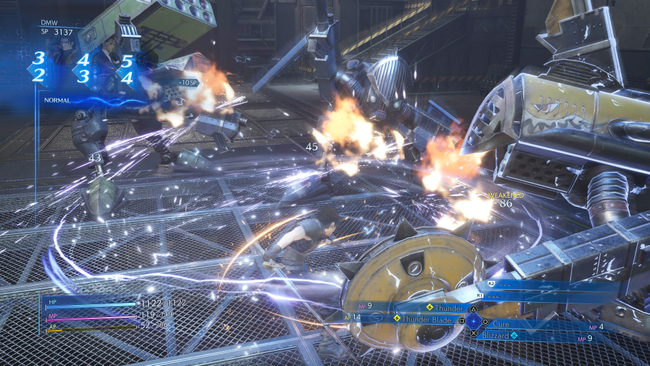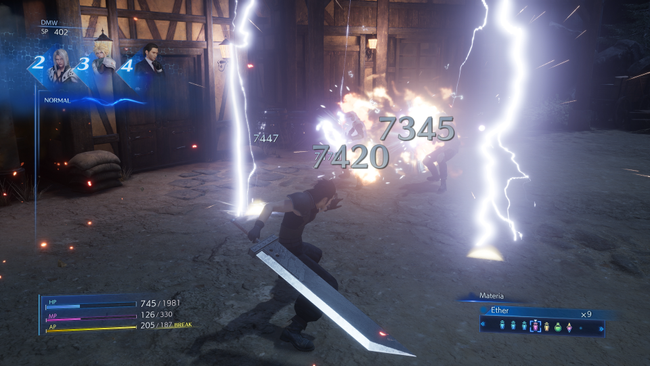
Thankfully, the best thing about Crisis Core is still in the remastered version
There’s much memorable about Crisis Core: Final Fantasy VII, and for better or worse the new remaster, subtitled Reunion, is a faithful port. That means many of its most memorable things are preserved.
Yeah, that means that “Me? Gongaga” is in, even if the voice acting for that scene - and all other scenes, in fact - have been changed and recast. It means the game’s incredibly memorable ending is intact. And, generally speaking, it means no major changes or overhauls - FF7 Remake this ain’t. One thing that we’re thrilled to report has stuck around, is just how breakable Crisis Core is.
There’s nothing like cracking the systems of a good RPG like an egg. This is in fact one of the main reasons why I have so much love for Final Fantasy VIII, where its brilliantly obtuse junction system can be exploited to rip the game inside out within the first couple of hours.
Crisis Core was never quite that broken, but it had some lovely exploits where with careful skill and knowing where to go and what to do, you can break out of the initial 9999/999 limits for HP, MP, AP, and damage, and begin dishing out some incredibly brutal punishment.

That’s why I wanted to quickly write a piece now the review embargo has lifted to note that while Crisis Core: Final Fantasy VII Reunion has an overhauled battle system, new menus, and even a couple of all-new battle mechanics to help it feel a little more like Final Fantasy VII Remake, it’s the same game under the hood - and yes, that means the balance is largely unchanged.
I’m pleased to report that I was able to speed-run my way to Costly Punch - a move that’s become somewhat associated with Zack - and then basically brawl my way through side missions, blasting the majority of enemies with a single hit and even most bosses with just a few well-placed smacks.
As Scott noted in our Crisis Core Reunion review, no matter how impressive the visual overhaul, Crisis Core remains a PSP game. That means that all of its 300 side missions take place on the same limited handful of maps, against the same enemies, and often with duplicated rewards. It’s in this that it feels most like a limited mobile game still - but it’s in deliciously open-ended RPG systems that it finds room to grow and engage players mechanically.
Between materia fusion, a large range of equipment, and the ability to trade off certain equipment slots or abilities in order to break what seem like initially insurmountable damage and stat caps, you can do that wonderful thing - just rip Crisis Core’s mechanical guts out.

Even though the game absolutely is designed to allow you to do this, it still feels naughty. It feels damn good - not just because of the sheer strength you wield, but also because that power takes some of the power away from the stupid-ass slot machine style DMW system. Yeah, leveling up Zack and Materia is still sadly beholden to a spin of the wheel - but after a while manipulating the game in this way, you'll barely need those rank ups anyway.
The game feels better for it. Mechanics cracked open, at that point you can go for the top tier missions and superbosses, where breaking the game’s initial core tenets is practically required to survive. This, aside from a few specific stand-out story sections, is for my money where this particular spin-off is at its absolute best.
It’s maybe not something you’ll want to do in your first play through, as if you go too far the story encounters will melt away in a manner that might not fit the story. But if you’re looking forward to turning Zack into an unholy monster with materia fusion, gear, and min-maxing, Crisis Core remains as much a treat now as it was back in 2007.